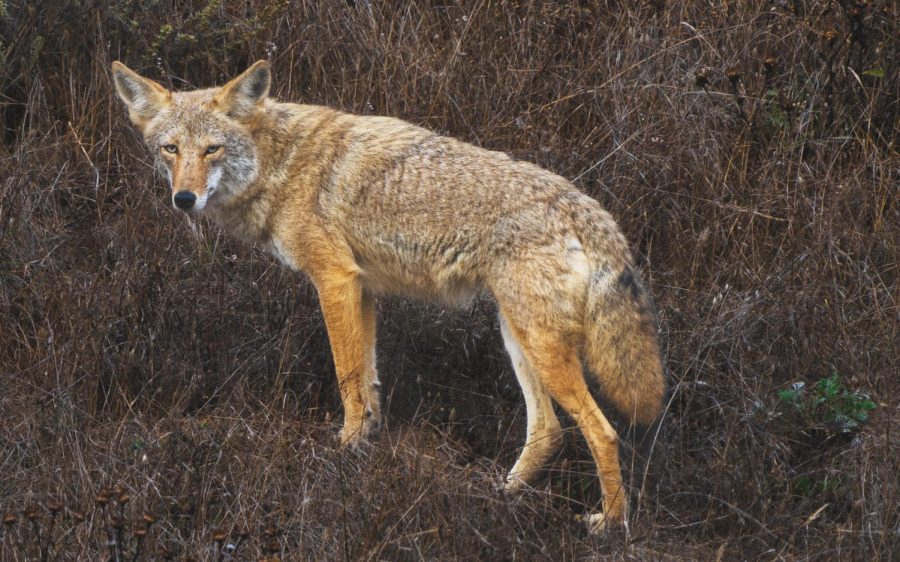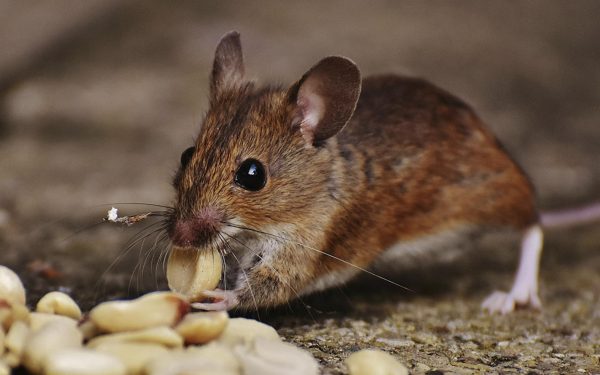EarthTalk: Get used to coyotes staying in urban environments
November 12, 2022
Dear EarthTalk: Why are coyote sightings so much more common in urban areas these days? Should I be worried about kids and pets outside? Is this a bad sign for the environment at large and is there a humane way to deter these carnivores from residential areas? — Max B., Norwalk, Connecticut
Coyotes, known as the Song Dogs of North America, are the sole canid predator endemic to North America. They can be found as far north as Canada and Alaska and as far south as Central America, but they are most prevalent in the Great Plains, where they began their outward migration 100 years ago. Since the 1950s, they’ve managed to expand their territory by 40% and can now be found anywhere from remote plains to bustling urban parks.
As many experts agree, the coyote is an incredibly adaptive animal. This evolutionary advantage has kept the species not only surviving but thriving in response to human expansion. This is one of the reasons the coyote has prevailed where other species have faltered and why their sightings have only increased along with urbanization.
 Coyotes are flexible creatures on many counts: their time of activity, their preferred habitat, even their diet. When they aren’t eating rabbits or small rodents, coyotes can be seen eating small fruits such as berries and apples and even vegetables such as carrots to maintain their daily caloric needs.
Coyotes are flexible creatures on many counts: their time of activity, their preferred habitat, even their diet. When they aren’t eating rabbits or small rodents, coyotes can be seen eating small fruits such as berries and apples and even vegetables such as carrots to maintain their daily caloric needs.
Coyotes also have flexible temperaments. They are aggressive enough to hunt small prey but skittish enough to avoid deadly human contact. Indeed, coyotes are relatively harmless to humans (but they will definitely eat a small pet). A 2021 study from Madison, Wisconsin, discovered that most human-coyote interactions were benign, lacking any aggression by the coyotes whatsoever. When participants in the study were asked to pick a number from zero (calm) to five (aggressive), 90% chose zero.
That being said, they are not completely harmless to humans and should always be approached with caution. Last year, four people were injured by a coyote in San Francisco, including a 4-year-old.
Counterintuitively, of all the factors influencing coyote population increases, one of the greatest may be population control. According to multiple studies conducted since the 1970s, the indiscriminate killing of coyotes, which has occurred for decades across all of North America, causes what is known as pack disruption, whereby normally “sterile” females become sexually active in a pack when an alpha male or female is killed. This phenomenon inevitably led to a positive feedback loop, where the encouragement of hunting reduced coyote population levels in the short-term, but increased them in the long-term.
Coyotes are considered a keystone species, meaning their presence or absence significantly influences an ecosystem. This also means their overabundance can lead to ecosystem disruption.
If you’re looking to humanely deal with a coyote, hazing — waving your arms and yelling — is often considered the best method of deterrence. Keeping pets inside and livestock penned securely is also encouraged, as is the removal of any garbage or pet food that you may have outside.
Column written by Dylan Stoll. EarthTalk is produced by Roddy Scheer and Doug Moss for the 501(c)3 nonprofit EarthTalk. See more at emagazine.com. To donate, visit earthtalk.org. Send questions to [email protected].
Columns represent the views of the individual writer and do not necessarily reflect those of the North Coast Current’s ownership or management.
cardiff current, encinitas current

















